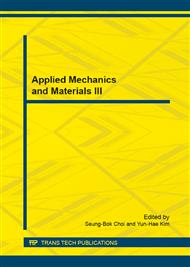p.596
p.601
p.605
p.610
p.615
p.619
p.624
p.629
p.633
On the Chemical Reduced Large Specific Surface Area Graphene Oxide and its Electrochemical Performances
Abstract:
Graphene oxide is prepared by modified Hummers method with the expanded graphite prepared from large flake graphite as raw material. The large tracts of graphene sheets prepared by ascorbic acid chemical reduction of graphite oxide are characterized by scanning electron microscope and X-ray diffraction. The electrochemical performances of graphene sheets are studied successively. The results show that large tracts of graphene sheets as an anode for lithium-ion batteries exhibits a high capacity of 1693 mAh·g-1 after initial discharge at a current density of 100 mA·g-1 and remains 426 mAh·g-1 after 100 cycles. The graphene sheets show good cycling stability even at high current density. The reversible specific capacities remains 218 mAh g-1 at the current densities of 1000 mA g-1 after 100 cycles.
Info:
Periodical:
Pages:
615-618
Citation:
Online since:
January 2015
Authors:
Price:
Сopyright:
© 2015 Trans Tech Publications Ltd. All Rights Reserved
Share:
Citation:



